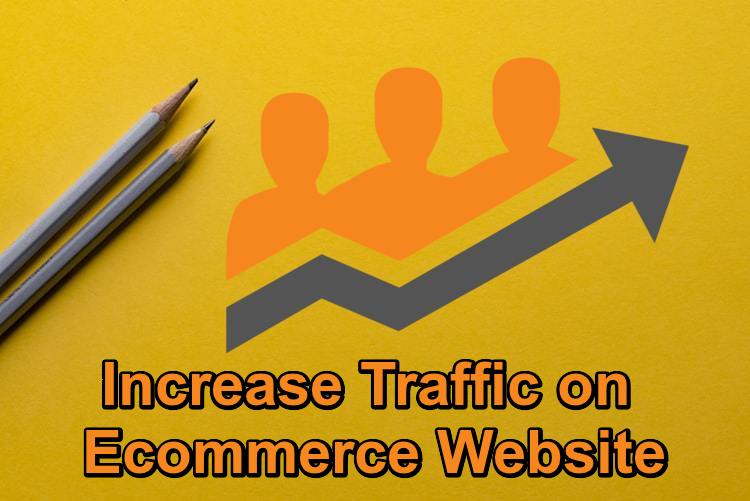01 Oct

|
Getting your Trinity Audio player ready...
|
In a world driven by rapid technological advancement, the way we shop has transformed dramatically, thanks to the surge of e-commerce. The digital marketplace is not just a convenience; it’s a revolution reshaping how consumers interact with brands and products. This blog post explores the future of shopping, highlighting innovations in e-commerce that cater to an increasingly digital-savvy audience.
Table of Contents
Key Innovations in E-Commerce Platforms and User Experience
E-commerce platforms are evolving to cater to the needs of a diverse, global consumer base. With an emphasis on user experience, platforms strive to create seamless, engaging journeys from product discovery to checkout. One significant innovation is the integration of augmented reality (AR), which allows customers to visualize products in their environment before making a purchase. This technology has been particularly impactful in industries like furniture and fashion, where seeing a product in context can make all the difference in decision-making.
Furthermore, mobile commerce (m-commerce) continues to gain traction, with more shoppers opting to make purchases via smartphones and tablets. In response, e-commerce platforms are prioritizing mobile-first designs, ensuring that their websites and apps offer the same quality experience regardless of the device. Features such as one-click purchasing and voice-activated search streamline the shopping process, catering to consumers’ desire for speed and convenience.
Innovations in payment and security are also enhancing user experience. By introducing multiple payment options, including digital wallets and cryptocurrencies, e-commerce platforms provide flexibility while ensuring secure transactions. These advancements not only attract tech-savvy consumers but also enhance trust and reliability, key factors in a successful online shopping experience.
The Role of AI and Machine Learning in Personalizing Online Shopping
Artificial intelligence (AI) and machine learning are at the forefront of e-commerce innovation, revolutionizing how retailers engage with their customers. By analyzing vast amounts of data, AI algorithms can predict consumer preferences and personalize shopping experiences in real-time. This level of personalization goes beyond simple product recommendations; it extends to curated email marketing, dynamic pricing strategies, and even personalized customer support.
Machine learning models also power inventory management systems, predicting demand and optimizing stock levels. This ensures that products are available when customers want them, reducing the likelihood of missed sales opportunities. By harnessing the power of AI, e-commerce businesses can adapt to changing consumer behaviours, ultimately resulting in more satisfied customers and increased revenue.
Sustainable Practices and Ethical Considerations in E-Commerce
In recent years, there has been a growing emphasis on sustainability and ethical considerations within the e-commerce sector. Consumers are increasingly aware of the environmental impact of their purchases, prompting businesses to adopt greener practices. One such approach is the use of eco-friendly packaging materials, which reduce waste and minimize the carbon footprint of shipping.
Additionally, many e-commerce companies are turning to sustainable sourcing, ensuring that their products are produced using environmentally responsible methods. This includes supporting fair trade practices and working with suppliers who prioritize ethical labour standards. By promoting transparency and accountability, businesses can build trust with consumers who value sustainability.
Ethical considerations also extend to data privacy and security. With the rise of e-commerce, consumers are more concerned than ever about how their personal information is used and protected. Companies that prioritize data protection measures not only comply with regulations but also foster a sense of trust and loyalty among their customer base. In a competitive market, demonstrating a commitment to ethical practices can be a significant differentiator.
E-Commerce Payment Processing: Trends and Technology
The world of e-commerce payment processing is evolving at a rapid pace, driven by technological advancements and changing consumer expectations. One notable trend is the widespread adoption of digital wallets.
Furthermore, the rise of cryptocurrencies has introduced new possibilities for e-commerce transactions. While still in the early stages of adoption, accepting cryptocurrencies as a payment method can attract a niche market of tech-savvy consumers. This trend highlights the importance of staying agile and adaptable in the face of evolving payment preferences.
Security remains a top priority, with advances in encryption and fraud detection technologies playing a critical role in safeguarding transactions. Today’s shoppers anticipate faster delivery, seamless e-commerce payment processing, and personalized experiences as the standard. Implementing robust authentication methods, such as biometric verification and two-factor authentication, ensures that consumers can shop with confidence. By prioritizing security, e-commerce platforms not only protect their customers but also strengthen their brand reputation.
The Future of E-Commerce: Predictions and Considerations
Looking ahead, the future of e-commerce is filled with exciting possibilities and challenges. One prediction is the continued integration of AI and machine learning, driving further advancements in personalization and automation. As these technologies evolve, they will enable even more sophisticated insights into consumer behaviour, allowing businesses to tailor their offerings with unprecedented precision.
Another anticipated trend is the rise of voice commerce, as smart speakers and voice-activated devices become more prevalent in households. This shift presents new opportunities for retailers to engage with consumers through voice-enabled shopping experiences, redefining how products are discovered and purchased.
However, as the e-commerce landscape evolves, businesses must also consider potential challenges, including regulatory changes and cybersecurity threats. Staying informed about industry developments and investing in robust security measures will be essential for navigating these complexities. By proactively addressing these considerations, e-commerce businesses can position themselves for long-term success.
Conclusion
In conclusion, the future of shopping is a dynamic and rapidly evolving landscape, driven by technological innovations and changing consumer expectations. E-commerce platforms that prioritize user experience, sustainability, and security will be well-positioned to thrive in this environment. By leveraging AI and machine learning, businesses can deliver personalized experiences that resonate with their customers.


